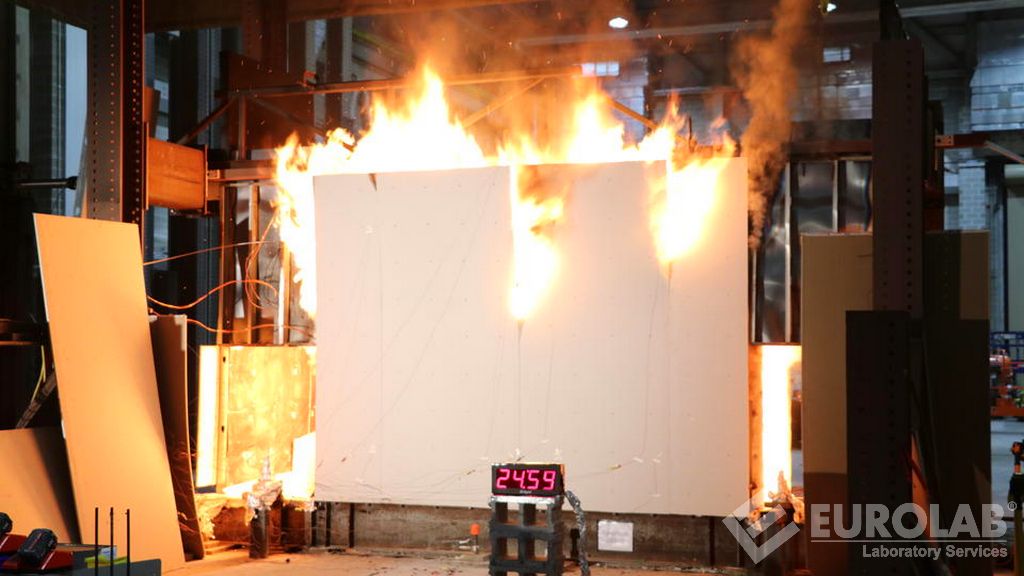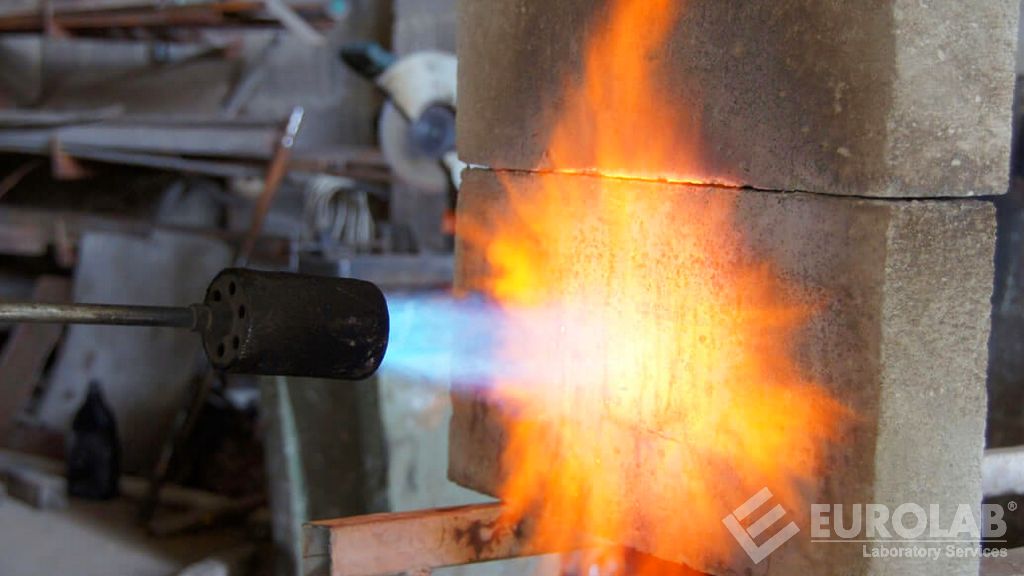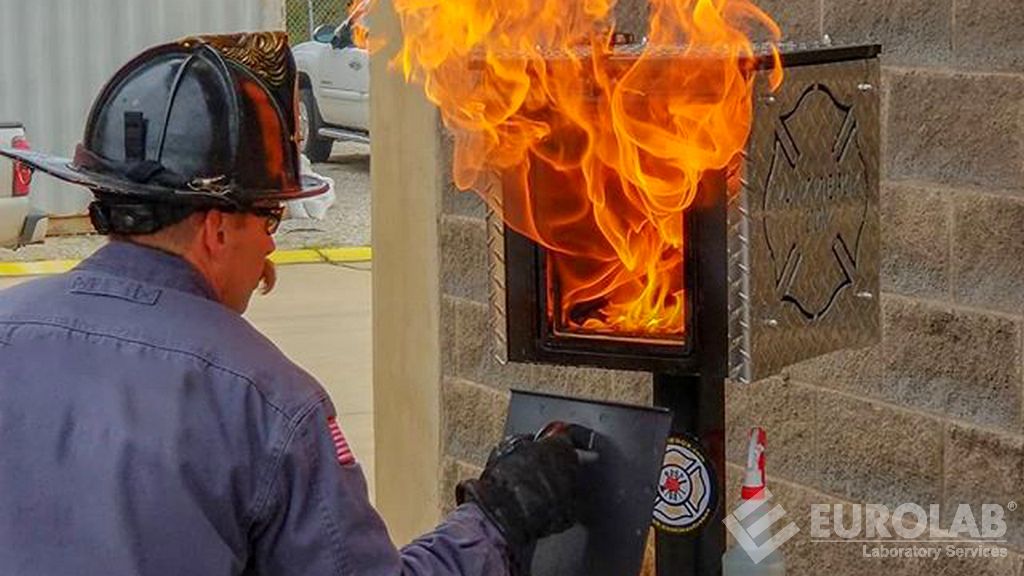

Fire resistance is the result of materials or their methods that prevent or delay the passage of high heat, flames or hot gases under conditions of use. The fire resistance strength of the materials used in production is determined by the degree of fire resistance. The degree of fire resistance is generally determined by performing fire resistance tests of a material or assembly.

The durability of a material or assembly in the fire resistance test is measured using the determined measurable criteria and the structural functionality of this material or assembly is revealed. For this purpose, certain types of fires are simulated in advanced laboratory environments and standard international time-temperature curves are developed.
Fire resistance of building elements refers to the period during which a building element ceases to fulfill its designed functions in the event of a fire. This definition conforms to the definition made in the ISO 834 Fire resistance tests, building construction elements standard. The integrity, insulation and stability of the building are evaluated with fire resistance tests. These tests are generally based on the test methods described in EN 1366, ISO 834, EN 13501-2, EN 1363-1 and ASTM E112 standards.
Fire resistance is a very important issue for any element of the building. Structural elements in particular must have sufficient resistance to spread the fire and overcome flames. Depending on the developing technologies, the high composite fiber content preferred in composite structures today supports the natural flame retardant properties. In addition, the additives and coating methods used increase these properties of composite building elements. In general, there are two different approaches to fire propagation resistance for composite structures: mixing a flame retardant into the polymer content of the composite or applying a flame retardant as a top coat during or after the manufacture of the component.
In each country's building legislation, provisions regarding fire safety measures take a wide place. National standards and legal regulations aim to minimize fire risks. Most of these legal regulations are related to building materials and building elements. In this case, each country's own standards and classification and evaluation criteria have emerged. For this reason, a building materials directive, which brings a general approach to building materials and elements, has been published in the European Union countries in order to eliminate different approaches and ensure the free movement of building materials.

This directive contains six basic requirements. These are mechanical strength and stability, safety in case of fire, hygiene health and environment, safety of use, protection against noise and energy saving and heat protection.
The classification regarding the fire resistance performance of the building elements made within the framework of the said directive is addressed to the EN 13501 standard. This standard has been published in our country by Turkish Standards (TSE) with the title TS EN 13501 Building products and building elements, fire classification.
The basic criteria that determine the fire resistance performance of building elements are: load carrying capacity, integrity and insulation. In addition, the following criteria are taken into account: radiation emission, mechanical strength, self-closing, smoke leakage, continuity of power or signaling (alarm), soot fire resistance, ability to protect against fire, durability under constant temperature and durability under standard time-temperature curve. time.
This part of the EN 1366 standard, a European standard, describes the requirements and provides a test method for determining the fire resistance of horizontal and vertical ventilation ducts, including access panels, which are an integral part of the tested ducts. In this test method, the behavior of the ducts exposed to fire is determined in cases of fire outside and inside the duct. This standard is handled together with another European standard, EN 1363-1.
Generally, the EN 1366-1 standard covers the following:
This standard has been published in our country by Turkish Standards (TSE) with the following title: TS EN 1366-1 Fire resistance tests for service installations - Part 1: Ventilation ducts.
This standard describes the requirements and provides a test method for evaluating the ability of a fire damper to prevent the spread of fire and smoke from one fire compartment to another through an air duct system that penetrates walls and floors separating the fire. The fire damper is connected directly to a fire separation element or remotely via a duct system. When starting the tests, the fire damper must be in open position. During the test, temperature and integrity measurements are made in various sections.

With this test method, the strength of fire dampers mounted on fire separators designed to withstand high temperature fire, smoke and gas transmission is determined. This standard is handled together with another European standard, EN 1363-1.
By the way, this standard is not suitable for testing fire dampers and non-mechanical fire dampers installed in suspended ceilings.
This standard has been published in our country by Turkish Standards (TSE) with the following title: TS EN 1366-2 Fire resistance tests - Service fire resistance tests - Service installations - Part 2: Fire dampers.
This part of the EN 1366 standard describes requirements and provides a test method for evaluating the ability of a penetration seal to maintain fire resistance of a separator at the location where it is entered by a service. This test method is a fire resistance test for service installations.
The main purpose of the BS EN 1366-3 standard is to evaluate the following:
This standard has been published in our country by Turkish Standards (TSE) with the following title: TS EN 1366-3 Fire resistance tests for installation installations - Part 3: Sealing gaskets.
Fire resistance is a very important issue for any element of a structure and there are a wide variety of fire resistance tests, many of which are designed to simulate specific fire threats on structures. The fire resistance rating is one of the many tools designers use to assess fire risk. In addition to fire resistance, there are other building material properties to be considered. For example, the combustion characteristics, the fuel load in the environment and the recommended use of the structure. All these features are taken into account when assessing the real fire risk. Factors such as the location of the building, the distance to fire services and the presence or absence of other fire protection systems are also part of this assessment process.
Our organization provides fire resistance test services within the framework of EN 1366 standards series to health institutions and manufacturing companies that request it within the framework of national and international standards, with a trained and expert staff and advanced technological equipment, among numerous testing, measurement, analysis and evaluation studies.
To get an appointment, to get more detailed information or to request an evaluation, you can ask us to fill in our form and reach you.